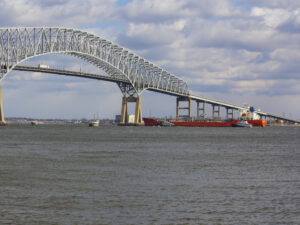Yesterday I wrote that we would be learning more and more about the Washington Metro accident fairly soon because the NTSB was usually willing to share information quickly following such tragic events.
Today, that information is continuing to come out, and the Washington Post is reporting that the driver of the second train may have in fact tried to manually apply the brakes to avoid collision.
The operator of the Metro train that slammed into a stationary train in front of it apparently had activated the emergency brakes in a failed effort to stop before the accident, federal officials said yesterday as they searched for the cause of Monday’s Red Line wreck that killed nine and injured 80.
What’s more troubling is that
Metro sources said, the first two cars of that train were two months overdue for scheduled maintenance of some braking components.
Moreover,
The six cars that made up Train 112 were put together in an unusual way. Metro trains operate in married pairs of cars, and the lead car is almost always an "A" car, which some operators say run more smoothly and communicate better with the electronic devices buried along the track. But in the case of Train 112, the lead car was a "B" car, Metro officials said. It was unclear last night why the train was configured that way. It was also unclear what effect, if any, the configuration could have had on the crash.
This is beginning to have the makings of an outrageous situation. Right now we know that (1) the cars involved in the accident were two months late for brake service; (2) the NTSB had instructed Metro in 2006 to replace and / or reconfigure certain cars for safety reasons; and, (3) the cars involved in the crash were put together in an "unusual way."
What’s going on here? Millions of passengers travel on Metro each week. To visitors of our Nation’s capital, the Metro is the best way to get around this wonderful city. Is the Metro authority taking shortcuts with rider safety? It certainly is beginning to look like this accident didn’t have to happen.
Check back later as more information becomes available.
@thumbnail.jpg)
Both an Emory School of Law graduate and MBA graduate of Goizueta Business School at Emory, Chris Nace focuses his practice on areas of medical malpractice, drug and product liability, motor vehicle accidents, wrongful death, employment discrimination and other negligence and personal injury matters.










Comments for this article are closed.